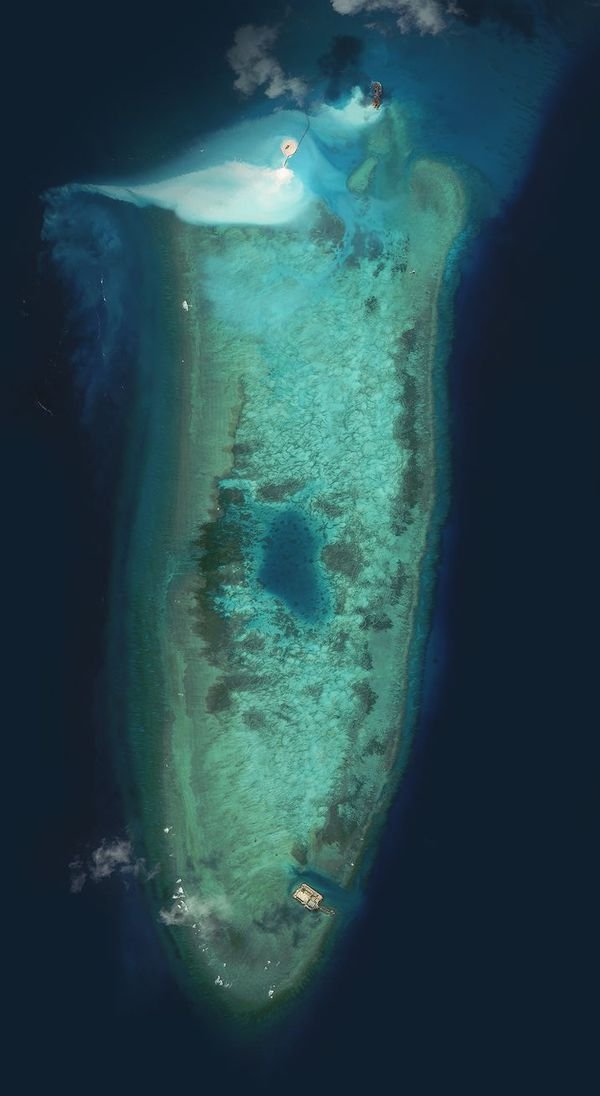Introduction
In a bold and strategic assertion, a top United States naval commander has declared that China’s continued attempts to intimidate and coerce rival claimants in the South China Sea have not succeeded. The commander emphasized that Beijing’s aggressive maneuvers—including the use of maritime militia, coast guard vessels, and naval power—have only strengthened the resolve of Southeast Asian nations and reaffirmed U.S. commitment to regional stability.
This pronouncement comes amid escalating tensions in one of the world’s busiest and most contested maritime regions, where overlapping territorial claims and freedom-of-navigation concerns have brought world powers into a delicate, often volatile, standoff.
The Strategic Significance of the South China Sea
The South China Sea holds immense geopolitical and economic importance. It serves as a critical trade route, with over $3 trillion in global commerce passing through its waters annually. Rich in fisheries and believed to contain significant reserves of oil and natural gas, the region has become a hotspot for competing claims, particularly involving China, Vietnam, the Philippines, Malaysia, Brunei, and Taiwan.
China claims nearly the entire sea under its so-called “nine-dash line,” a demarcation that has been widely disputed and rejected by international legal bodies. The United States does not recognize these expansive claims and continues to conduct Freedom of Navigation Operations (FONOPs) to challenge excessive maritime claims and ensure the open use of international waters.
U.S. Commander’s Message: Coercion is Failing
Speaking during a joint naval exercise in the Indo-Pacific, the U.S. commander stated unequivocally that China’s coercive tactics have failed to bring neighboring countries into submission. Instead, these aggressive actions have reinforced the strategic partnerships among regional allies and increased military cooperation with the United States and its partners.
The commander highlighted how China’s use of water cannons, ship ramming, laser targeting devices, and the deployment of maritime militia vessels has only deepened mistrust in the region. Far from isolating countries like the Philippines or Vietnam, China’s actions have pushed them closer to the United States, Australia, and Japan in terms of defense and economic collaboration.
Rise of Multilateral Defense Cooperation
One of the most significant developments in response to China’s behavior has been the strengthening of defense ties among key Indo-Pacific nations. Joint patrols, increased intelligence sharing, military exercises, and strategic dialogues have become more frequent.
The Philippines has renewed its Enhanced Defense Cooperation Agreement (EDCA) with the U.S., allowing access to key bases for mutual training and rapid response. Japan and Australia have both stepped up naval presence and arms support in the region. Even nations traditionally cautious about defense alignments, such as Indonesia and Malaysia, are increasingly engaging in multilateral maritime dialogues and drills.
These efforts aim to bolster regional deterrence, reinforce sovereignty claims, and uphold the principle of a free and open Indo-Pacific—values that stand in direct opposition to Beijing’s assertive stance.
China’s Tactics: Coercion by Sea
China’s approach in the South China Sea has been marked by a combination of soft and hard power. It has built artificial islands, equipped them with military-grade runways and missile systems, and established administrative zones to cement its claims. Simultaneously, it has deployed large coast guard ships and fishing militias to harass vessels from rival nations.
In recent years, there have been multiple incidents where Chinese vessels have used high-powered water cannons to drive away Filipino and Vietnamese fishing boats. Surveillance drones, signal jamming, and radar blinding technologies have also been reportedly used to disrupt operations in contested areas.
Yet, according to the U.S. commander, these measures have not broken the will of Southeast Asian nations. Instead, regional players are investing more in naval capabilities and seeking broader international support.
Washington’s Enduring Commitment
The United States has reiterated its longstanding commitment to defending international law and supporting its allies and partners in the Indo-Pacific. As a Pacific power with deep economic, military, and cultural ties to the region, the U.S. has a vested interest in maintaining stability and ensuring free navigation through key trade routes.
The commander emphasized that the U.S. Navy would continue to operate wherever international law allows, including conducting routine patrols in the South China Sea. These patrols are not designed to provoke conflict, but to underscore that no country has the right to unlawfully restrict access to open seas.
Moreover, the U.S. Indo-Pacific Command has been steadily enhancing its presence, deploying carrier strike groups, amphibious ready groups, and rotational forces across allied territories to ensure rapid response capability.
Regional Reactions and Resistance
Countries bordering the South China Sea have responded to Chinese pressure in diverse ways, but a common theme has been resilience and defiance. The Philippines has recently strengthened its military outposts in the Spratly Islands and continues to press international forums for support in upholding a 2016 arbitral ruling that invalidated China’s expansive maritime claims.
Vietnam, with one of the most capable navies in Southeast Asia, has also increased maritime patrols and invested in submarine and missile technology. Malaysia and Brunei, while more reserved in their public statements, have quietly reinforced their maritime boundaries through bilateral agreements and improved surveillance systems.
These nations, though varying in capability and strategy, are united in the belief that sovereignty should not be dictated through force or intimidation.
The Role of ASEAN and Diplomatic Channels
The Association of Southeast Asian Nations (ASEAN) has long struggled to form a unified response to the South China Sea issue, largely due to internal divisions and economic dependencies on China. However, recent developments suggest a growing willingness to address maritime security collectively.
The U.S. commander praised the diplomatic efforts of ASEAN states that have openly called for adherence to international law and the peaceful resolution of disputes. Several member states are advocating for the completion of the long-delayed Code of Conduct with China, though skepticism remains about its enforceability.
Increased dialogue between ASEAN and Western allies has opened new channels for maritime cooperation, disaster response planning, and joint exercises—further isolating China’s unilateral approaches.
Balancing Deterrence and Diplomacy
Despite the rising tensions, there remains a concerted effort to avoid direct military confrontation in the South China Sea. The U.S. commander clarified that while deterrence is necessary, diplomacy must remain the primary tool in resolving disputes.
Communication hotlines, maritime de-escalation protocols, and confidence-building measures are being promoted to avoid unintended clashes. The goal, according to the commander, is not to provoke but to protect the international norms that ensure peace and prosperity.
There is also recognition of the need to manage competition responsibly. The U.S. and China maintain regular military-to-military contacts, and both sides have expressed the desire to avoid incidents that could escalate into broader conflict.
Technological Edge and Naval Preparedness
Part of the United States’ strategic advantage in the region lies in its advanced naval capabilities. The commander noted that emerging technologies—including autonomous vessels, integrated AI systems, cyber operations, and undersea warfare enhancements—are reshaping modern naval strategy.
The U.S. Navy’s ability to project power, gather intelligence, and rapidly respond to crises remains unmatched. These strengths serve as both a deterrent and a stabilizing force in the region. As China continues to expand its own naval power, the technological edge will be crucial in maintaining balance.
Joint exercises and war games with allies ensure that forces remain interoperable, flexible, and prepared for a wide range of scenarios, from humanitarian missions to high-end conflict.
Public Support and Global Awareness
Public opinion in several affected countries appears to support a firm stance against Chinese aggression. Citizens in the Philippines, Vietnam, and Taiwan have protested maritime incursions and called on their governments to defend national sovereignty.
The U.S. commander emphasized the importance of transparency and public engagement. He stated that keeping citizens informed, respecting human rights, and working with civilian authorities are essential components of military operations in democratic societies.
Raising global awareness about the challenges in the South China Sea helps build international pressure on Beijing to act responsibly and respect lawful boundaries.
Conclusion
The statement by the U.S. commander that China is failing to coerce rival states in the South China Sea sends a clear and powerful message. It reaffirms the United States’ leadership role in defending international norms and supporting smaller nations that face undue pressure.
While the situation in the South China Sea remains complex and fraught with risks, the commitment to peace, partnership, and lawful conduct appears to be prevailing. China’s efforts to dominate the region through intimidation have met with growing resistance, not acquiescence.
As the world continues to watch developments unfold, the balance between deterrence and diplomacy will be critical. One thing is certain: the resolve of regional nations, backed by U.S. strength and solidarity, remains firm in defending freedom of navigation, territorial sovereignty, and a rules-based maritime order.


